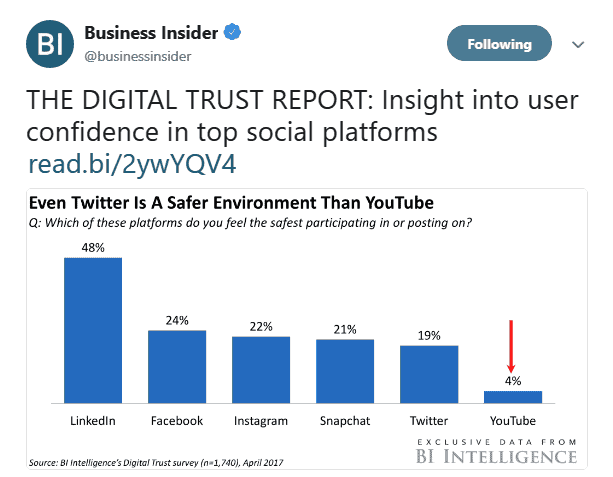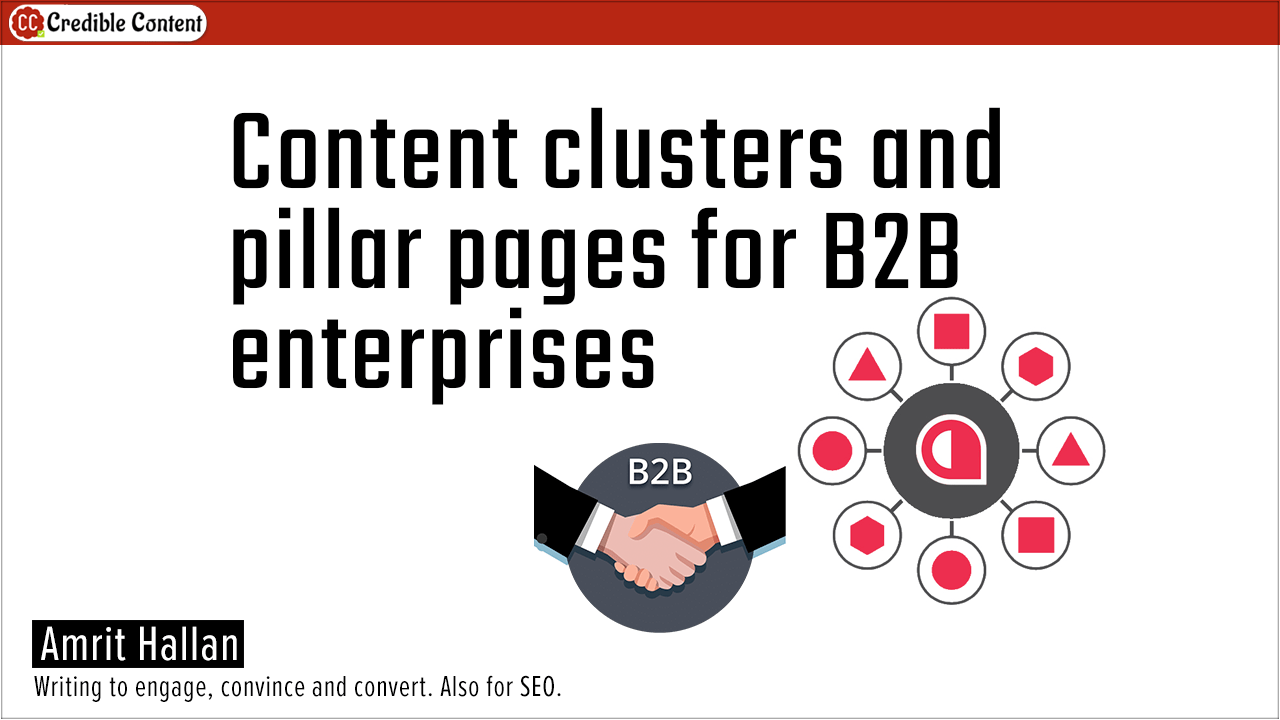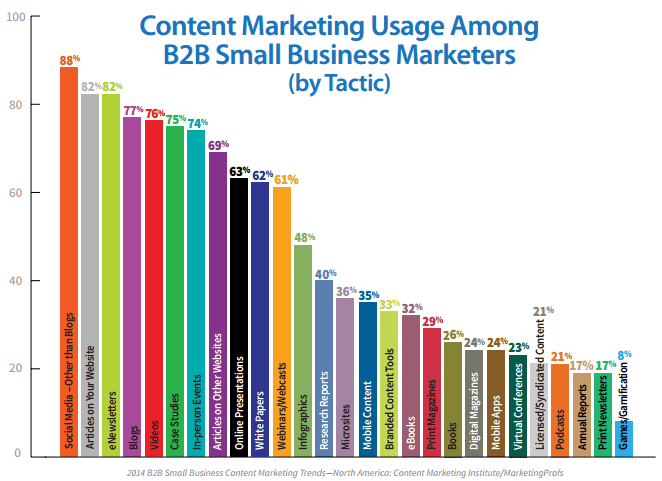
Use LinkedIn for B2B content marketing
LinkedIn, as I’m sure you know, is a social network for professionals. An interesting fact about LinkedIn is that it was launched back in 2003. People were not even aware of the concept of social media and social networking.
Although exceptions are always there, people often have a LinkedIn account to find business opportunities. Whether you’re looking for a job, business leads, or business partners, LinkedIn allows you to create a presence that provides all the relevant information your prospective employers and business partners might be looking for.
There are two reasons why people are on LinkedIn:
- Seek new job opportunities
- Seek new business partners/customers/clients
The second point is the focus of this blog post.
Just like any channel or any network, when there are too many people vying for attention, you need to stand out. How do you stand out? You market yourself. You promote yourself. You do something that makes people notice you for the right reasons.
For example, I provide content writing and content marketing services and I would like to draw attention of people on LinkedIn who are looking for businesses and individuals providing these services (and preferably, find my profile).
The problem is, just as I want to attract these clients, there might be hundreds of content writers and content marketers trying to achieve the same. I need to compete with them.
On social media as well as search engines, when you are vying for targeted attention, you’re not just competing with your competitors, you are also competing with numerous other distractions that may prevent your prospective customers and clients from taking note of your presence even if your presence is right in front of their eyes.
Sure, on LinkedIn people may search for keywords and tags associated with your business and they may be able to find your profile for the right reasons, but if your competitors are aggressively marketing themselves on the platform, even if your prospects come across your profile, they may get distracted by more aggressive professionals who are constantly posting highly valuable content on their timelines, conveying in the process that they are proactively promoting themselves.
But why focus on LinkedIn for B2B content marketing?
As mentioned above, LinkedIn is a business networking platform. These days, it is also evolving as a high-quality content publishing platform – content mostly catering to businesses. This Content Marketing Institute report says that 94% B2B companies that were surveyed for the report find LinkedIn as their preferred content marketing platform.
Among the top five networking platforms, when it comes to doing business, people trust LinkedIn the most. The report was published in Business Insider. Somehow, the web page has vanished, but here is the Twitter update posted by the publication and in case you cannot access even that, I have also put a screenshot of the Twitter update.

LinkedIn B2B content marketing screenshot
Facebook comes second, then Instagram, then Snapchat and then Twitter.
This is mostly because when people are browsing their timelines on LinkedIn they know that LinkedIn users are not interested in sharing what they had for breakfast or what new cute cat video they have stumbled upon. Most probably they are going to publish some business-related information that can be directly or indirectly used.
Why people trust content, on LinkedIn and elsewhere?
When I talk of content I don’t mean junk content published only to improve search engine rankings (they no longer improve, but that’s a different topic). Good quality content means you are sharing your knowledge and you are sharing it not just to prove how good you are, but also in such a manner that the knowledge that you share helps people.
For example, if in this blog post I talk about how to use LinkedIn for B2B content marketing, one of the bigger aims is to tell you something that you can use to grow your business. The more I help, the more you trust me.
When you trust me, it doesn’t mean I have succeeded in manipulating you. I’m not forcing you to do business with me. I’m just sharing with you something that I know. Through sharing, I let it be known to you that when I work for you, I’m going to use the same expertise, the same knowledge, to help you grow your business through my content writing and content marketing services. If I were a lawyer, I would like to talk about the cases I have worked on (of course, without revealing confidential information) and how much knowledge of law I have.
Content breeds familiarity and no, such familiarity does not breed contempt. Again, not just content, good, useful, relevant content.
It is the familiarity factor that makes people work with you. If you’re constantly publishing junk content people lose respect for you and if they don’t have respect for you, how do you expect them to do business with you?
Good content, even if it is of no use to them, builds trust. Your presence on their timelines isn’t just a nuisance they are too lazy to get rid of, it’s a value addition. They pay attention to your content whenever you post it on LinkedIn or elsewhere. They share your content with people who may find it useful.
This, of course, also helps your search engine rankings. Google has built advanced algorithms that can actually gauge the quality of your content. Also, it matters how many people are linking to it and sharing it.
Using LinkedIn for B2B content marketing
First, understand, what is B2B content marketing and how it is different from B2C content marketing. Is it really different?
In theory they are not, but in practice they might be.
In B2C, even cute cat videos may do the trick, although, you may have to create a presence on another networking platform like Facebook or Instagram. B2C content marketing is mostly for brand awareness. In B2B, people want information they can use to do business with you. In both the cases you publish valuable content – although the definition of value may change with the sort of audience you are trying to target. B2B content marketing is mostly about lead generation.
It doesn’t mean every piece of content that you publish on LinkedIn or distribute through LinkedIn needs to be a lead generating magnet – some pieces of content are simply published to raise awareness about one’s business.
But generally, when you post content on LinkedIn to attract B2B opportunities, people should be immediately able to make out what business you are in. For example, if I am promoting my content writing and content marketing services on LinkedIn, I shouldn’t be posting coffee making tips all the time, unless I specifically provide my services to this niche. Even then, the primary focus needs to be on content writing and content marketing instead of simply coffee making.
There are two ways you can market content on LinkedIn for B2B opportunities:
- Publish blog posts and articles directly on LinkedIn
- Publish blog posts and articles elsewhere (preferably on your own website) and then publish the link in a LinkedIn update
There are different reasons why you should publish content directly on LinkedIn and why you should publish it on your own website because both the platforms have their individual merits.
LinkedIn is a ready-made publishing platform with its own content promotion mechanism. There is a greater chance of more people coming across your content on LinkedIn rather than on your own website if it isn’t yet very popular and it doesn’t get much traffic from search engines.
On the other hand, unless you publish quality content on your website, you are not going to improve your search engine rankings and you cannot build your brand through quality content if the content does not exist on your own website.
You need to maintain a balance. For example, for every three blog posts that you publish on your own website, publish at least one on LinkedIn.
Grapevine has it that LinkedIn gives preference to content published on its own platform over content published somewhere else and then simply the link posted on LinkedIn.
What sort of content you should publish on LinkedIn for B2B marketing?
Mostly, informative content written in a casual manner. Remember that most of the people will be accessing your LinkedIn content from their mobile phones. They don’t want to read heavy text. Write in the format of case studies. Present a problem, then present a solution and present the solution in such a manner that you should be providing that solution.
You can also publish content to display your proactive approach towards your business. Suppose, recently you attended a conference. You can write about the observations you made, the new ideas you got and things you agreed and disagreed with.
Or maybe there is a blog post written by another authority figure in your niche and you want to add your own point or you want to contradict that person with your side of the story. Go ahead, people are going to find it interesting.
You can also post shorter tutorials. For example, how to optimize the title of your blog post so that your blog post enjoys higher search engine rankings. Or, if you provide accounting services you can write about how to do effective bookkeeping for certain transactions.
The basic idea is, publish something that people will find useful and relevant.






